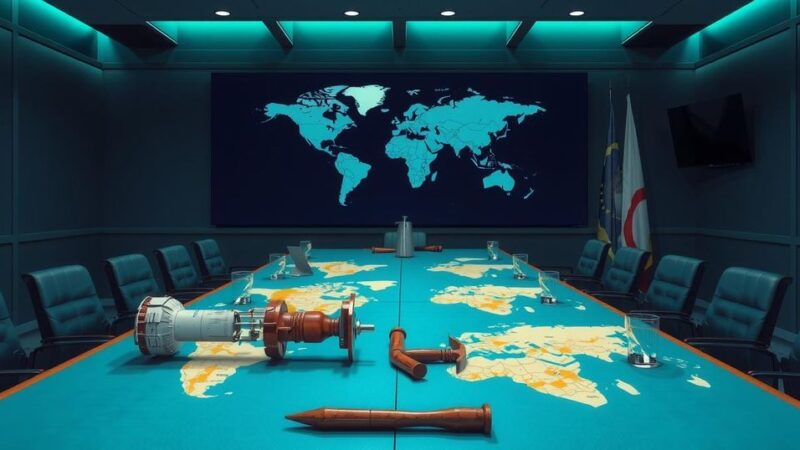Iran has threatened to target British military forces at the Chagos Islands if the U.S. launches an attack on the nation. Following President Trump’s warnings related to Iran’s nuclear development, Iranian officials indicated their readiness to strike the Diego Garcia base. Despite resistance to direct negotiations, Iran expressed openness to indirect talks regarding nuclear agreements, highlighting ongoing geopolitical tensions.
Iran has declared its intention to target British military forces stationed at the Chagos Islands if the United States conducts a military strike against the nation. Following President Donald Trump’s warning regarding military action unless Iran agrees to a nuclear deal, an Iranian military official stated that Tehran would retaliate against forces based at the joint U.S.-U.K. naval base on Diego Garcia.
The official asserted that there would be no differentiation between targeting British or American forces should an attack occur from any nearby base within Iranian missile range. “When the time comes, it won’t matter whether you’re an American, British, or Turkish soldier – you will be targeted if your base is used by Americans,” he remarked, highlighting the serious nature of their threats.
According to Iranian state media, Tehran intends to utilize ballistic missiles and suicide drones to strike the Diego Garcia base in retaliation for any hostile actions from the U.S. They emphasized that Iran has sufficient weaponry, including advanced missile variants and kamikaze drones capable of reaching long distances, to execute such strikes.
The Diego Garcia base is considered highly strategic by Iran, as it hosts a fleet of B-2 Spirit bombers that could potentially target Iranian underground facilities. Recent satellite imagery indicated the arrival of additional B-2 bombers at this base, reinforcing Iran’s perception of the threat posed by this military installation. The U.K. government has condemned Iran’s threats, affirming its commitment to regional security and de-escalation efforts.
In addition to Diego Garcia, Iranian state media identified other U.S. military sites across Asia and the Middle East as potential targets. The geopolitical situation surrounding the Chagos Islands remains complex, as the U.K. plans to negotiate the sovereignty of the islands with Mauritius while maintaining military operations through leased arrangements.
President Trump has reinstated his “maximum pressure” campaign on Iran, aimed at curtailing its nuclear program. He has expressed a desire for a nuclear agreement yet has issued statements warning Iran that failure to negotiate could result in dire consequences.
Ayatollah Ali Khamenei, Iran’s supreme leader, has firmly opposed direct negotiations with the U.S., stating that engaging in talks with America will not resolve existing problems. Political analysts assert that the Iranian regime is in a precarious position and may feel compelled to respond aggressively if attacked. Although Iran maintains a stance against direct talks under U.S. pressure, there are indications of openness to indirect negotiations, as reflected in their recent communications through Oman.
Iran’s threats against British forces in the Chagos Islands underscore rising tensions following President Trump’s military warnings. The ability of Iran to execute strategic strikes using advanced weaponry against locations like Diego Garcia amplifies regional security concerns. Although Iran remains resistant to direct negotiations with the United States, the openness to indirect dialogues indicates a complex dynamic in their willingness to engage on nuclear issues. President Trump’s approach continues to draw scrutiny as both nations navigate this precarious geopolitical landscape.
Original Source: www.telegraph.co.uk






